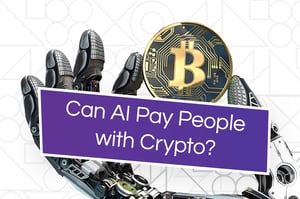
Cardano
Short Name: ADA
About Cardano
Cardano (ADA) is a proof-of-stake cryptocurrency. It has gained substantial traction since its entry into markets due to its intriguing peer-review infrastructure. Updates to the Cardano system are made through peer-reviewed scientific research and voted upon by a global community of academic researchers and scholars. The Cardano community asserts ADA as a “3rd-generation” cryptocurrency. Cardano was developed to solve the 3 predominant issues of the former generations. Namely: scalability, interoperability and sustainability. 1st generation crypto assets transfer and store virtual money, but are hindered by scalability issues (transactions per second, network bandwidth and storage). The 2nd generation of crypto assets are underpinned by smart contracts but are similarly unable to address scalability obstacles.
Cardano’s Ouroboro system solves scalability through proof-of-stake (PoS), rather than proof-of-work (PoW) set forth by the BTC protocol. PoS offers enhanced efficiency because it doesn’t allow all participants to mine new blocks, reducing global energy requirements. Instead, the PoS network elects’ specific nodes to mine the next blocks. ADA solves the issue of large bandwidth requirements by sub-dividing the ADA network into silos using a technique called recursive internetwork architecture (RINA). Moreover, ADA resolves the problem of storage requirements through pruning, compression and partitioning. Interoperability allows ADA to accommodate transactions between other cryptocurrencies. This essentially grants ADA the power to function as a crypto asset intermediary operating as the “internet of blockchains”. Stated differently, ADA is constituted by a blockchain protocol capable of interpreting other blockchains. Governments and banks have historically shied away from cryptocurrencies because they don’t adhere to customary financial regulations.
Majority of cryptocurrencies lack the metadata necessary to determine transaction participants and the nature of such transactions. However, part of the crypto appeal is this very anonymity. The Cardano protocol, however, allows participants the discretion to attach metadata to transactions if they prefer to do so. Hence, accommodating the potential for institutional cooperation. Finally, ADA addresses the issue of sustainability through a treasury. The ADA treasury receives a micro-percentage of every transaction on the blockchain. The treasury itself is a special wallet not controlled by a central party. The treasury is built on a system which releases ADA to developers whom enhance the system’s protocol through the peer-review voting system. To receive compensation from the treasury, developers have to submit a proposal to the ADA community describing the updates to the system, and how much ADA they require for the development. Hence, the community votes on ideas for which the treasury must fund. Over time the treasury model keeps Cardano sustainable by providing a continuous stream of funding that can be used to bolster research and improve the system.
Key Features
Blockchain: Foundational technology

Worldwide peer-to-peer payments

Transparent

Solves double spending problem



